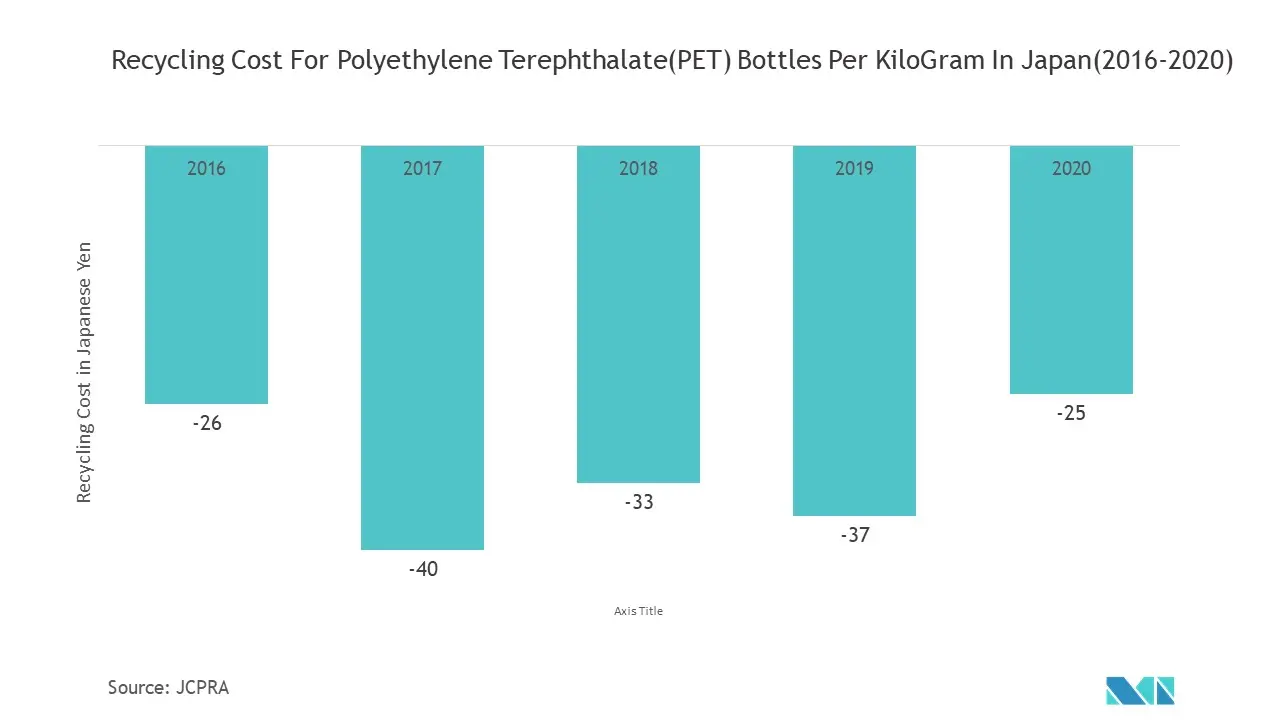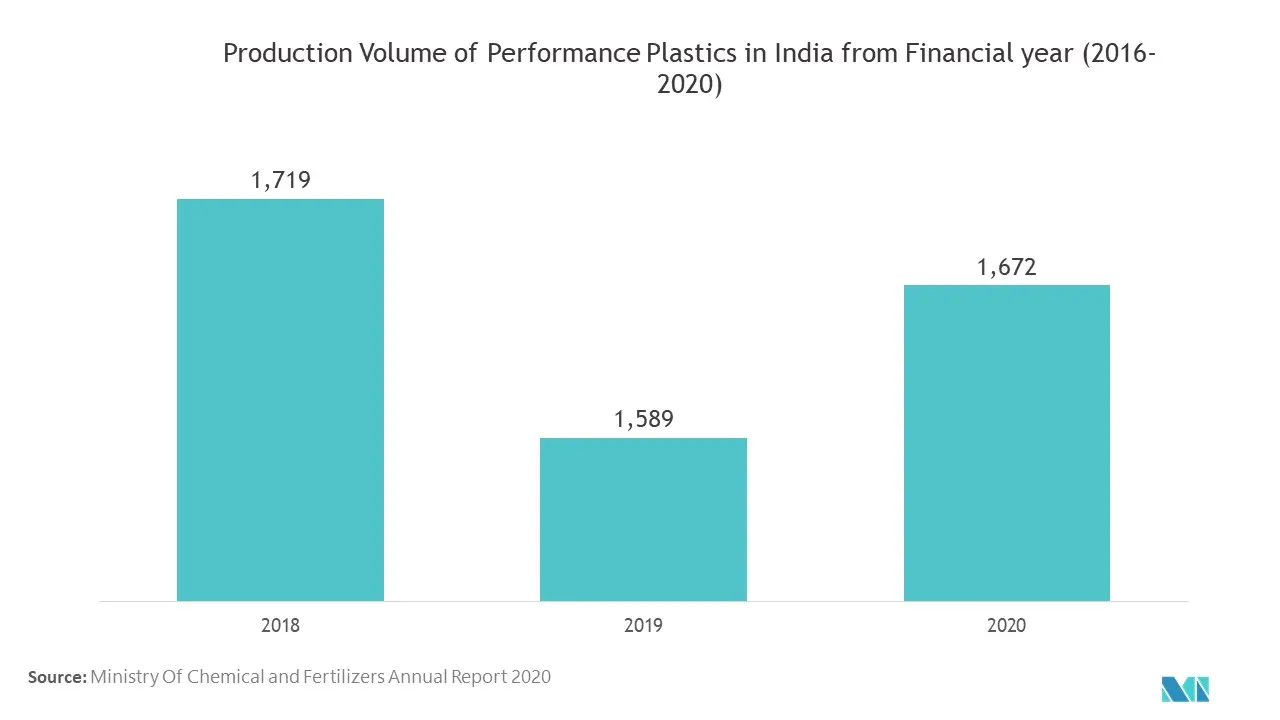Market Trends of Asia-Pacific Plastic Bottles and Containers Industry
This section covers the major market trends shaping the APAC Plastic Bottles & Containers Market according to our research experts:
PET Developments with Respect to Environment
- Demand for bottled beverages has increased due to the growing tendency of westernization, rising disposable incomes, and changing consumer dietary patterns, particularly in developing nations like India and China. Furthermore, consumers' hectic lifestyles have enabled them to choose on-the-go beverages.
- Adopting PET can lead to up to 90% weight reduction compared to glass, allowing a more economical transportation process. Currently, plastic bottles made from PET are widely replacing heavy and fragile glass bottles, as they offer reusable packaging for mineral water and other beverages.
- Ecobricks, made of recycled PET bottles and fillers, including dirt, plastic wrapper trash, and other materials, have been used to construct walls. In addition, there have been newfound uses for post-recycled consumer plastic, such as using it as a non-load-bearing construction material. Still, advancements have led to its integration into more sophisticated construction infrastructure, such as bridges.
- The PET bottle business has a lot of potential because of technological advancements. For instance, Companies in the studied region have developed a plasma-based coating that makes PET bottles more resistant to the elements. Aside from that, they've started using silver to extend the shelf life of their products.
- One of the foremost reasons that many manufacturers chose PET is that it is 100% recyclable and highly sustainable. It may be recovered and recycled multiple times –– into personal care product containers, carpet and garment fibers, automobile parts, construction materials, industrial strapping, and other packaging materials.

India is Observing Rapid Increase because of its Government Policies
- In advanced economies, mineral water bottles are used only once, but in countries like India, they are often reused. According to the statistics given by the Indian government, nine out of ten of PET bottles are recycled in India. In June 2018, the Government of India announced its plans to eliminate single-use plastics by 2022.
- Further, due to several government initiatives toward awareness around plastic recycling and measures to eradicate the negative impact of plastic waste on the environment countries, like India are urging the FMCG companies to work toward plastic waste management and using 100% biodegradable plastic for ready-to-eat and cosmetic products. As a result, major FMCG companies, such as Hindustan Unilever, Marico, Nestle India, Coca-Cola, Pepsi-Co, and Parle Agro, are planning to move to 100% recyclable packaging by 2025, aiming for a sustainable future.
- Multiple governments, such as in India, the Tamil Nadu government, suspended the ban on single-use plastic bottles and bags in retail trade in the wake of the COVID-19 disruption.
- The competitive rivalry is hugely dependent on the end consumption of plastics. Considering the beverage industry, for instance, India is dominated by PET bottles. Additionally, as per the Federation of Indian Chambers of Commerce & Industry (FICCI), the Indian consumption of nearly 11 kg of plastic per year is further expected to rise in the coming years.
- According to the India Brand Equity Foundation (IBEF), the country's market for plastic bottles is continuing to grow, with plastic exports totaling USD 2.76 billion from April 2020 to January 2021.

